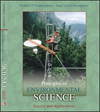 |  Principles of Environmental Science William P. Cunningham,
University of Minnesota
Mary Ann Cunningham,
Vassar College
Populations, Communities, and Species Interaction
Learning ObjectivesAfter studying this chapter, you should be able to
I.describe how environmental factors determine which species live in a given ecosystem and where or how they live. |
 |  |  | II.understand how random genetic variation and natural selection lead to evolution, adaptation, niche specialization, and partitioning of resources in biological communities. |
 |  |  | III.compare and contrast interspecific predation, competition, symbiosis, commensalism, mutualism, and coevolution. |
 |  |  | IV.explain population growth rates, carrying capacity, and factors that limit population growth. |
 |  |  | V.discuss productivity, diversity, complexity, and structure of biological communities and how these characteristics might be connected to resilience and stability. |
 |  |  | VI.explain how ecological succession results in ecosystem development and allows one species to replace another. |
 |  |  | VII.list some examples of exotic species introduced into biological communities, and describe the effects such introductions can have on indigenous species. |
|



 2002 McGraw-Hill Higher Education
2002 McGraw-Hill Higher Education